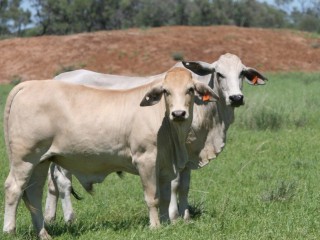 Many beef producers in Queensland and New South Wales saw a huge increase in dung beetle activity last season with the wet summer and mild, wet winter.
Many beef producers in Queensland and New South Wales saw a huge increase in dung beetle activity last season with the wet summer and mild, wet winter.
And with good early rain following a mild winter in many areas, the next dung beetle season has already begun, and is shaping up well.
In Central Queensland, good activity has already been found in monitoring sites from Mackay to Rockhampton and as far south as Theodore, says Mick Alexander from Grazing Bestprac in Yeppoon.
Warmer soil temperatures and increasing soil moisture were the signals which many dung beetle species utilised as the time to complete their breeding cycle and begin their job of burying dung.
“Two weeks ago, we were finding dung that was being buried in less than a day, with complete pads moving,” Mr Alexander said.
“Many of the producers I’ve spoken to in the region are surprised to see such activity so early in the season, and they are committed to giving the beetles every chance to breed and bury dung as effectively as possible,” he said.
Dung beetles were introduced from Africa and Europe in the 1960s and 70s as a form of Integrated Pest Management (IPM) to recycle dung and reduce disease problems through fly populations. They are now the most important single natural buffalo fly control strategy being used by cattlemen in Australia.
Rapid burial of dung pads by dung beetles removes the fly breeding habitat and reduces moisture content in the dung so that larval incubation does not occur. This could substantially reduce bushfly and buffalo fly numbers, and hence parasite loads on livestock.
Mr Alexander said this was an ideal time for grazing land managers and their families to discuss options for managing parasites this season and to develop a plan.
“It’s important to remember that the humble dung beetle buries the eggs and larvae of many internal and external parasites and dries out the dung, so parasite larvae die. That means less worms and buffalo fly and less chemical being applied,” he said.
The double-edged sword, however, was that if some chemical parasite controls were used, then there would be an effect on dung beetle activity.
The only parasiticides that did not have any impact on dung beetles were those excreted through the urine, he said. These are listed on the Dung Beetles Australia website.
Although many producers were looking for alternatives to chemical treatment such as buffalo fly traps and organic products, there was still only a small percentage using these strategies, Mr Alexander said.
All beef producers needed to aim for high dung beetle populations and good diversity of species as the most important step in developing an integrated pest management plan (IPM) for grazing enterprises.
“The most critical points for Grazing Best Management Practice in relation to dung beetles, include monitoring of beetle activity from the first rainfall in spring, developing strategies which minimise the impact on dung beetle species and populations, reducing chemical usage, treating only those stock which are being impacted, and using organically certified products where possible,” Mr Alexander said.
“Now is an excellent time for all grazing families to start inspecting their dung pats to assess the extent of beetle activity,” he said.
There were two options to assess populations and species on-farm – floatation or Howden trapping.
The simplest and cheapest method was floatation:
- Collect a number of pads that are eight to ten hours old, placing them in a 20-litre bucket
- Filling the bucket with water and stirring to break up the solid dung portions.
- The beetles will float to the surface, from where they can be collected with a gauze strainer to allow identification and counting.
The second method, called a Howden trap, is based on a pit-fall method used to collect dung beetles over a 24 hour period. It is described in more detail on the Dung Beetles Australia website, together with information on identifying different species.
Improving dung beetle populations was estimated by Agforce in 2002 to be worth more than $13 million annually to the Queensland beef industry. One estimate suggested superior management for dung beetles today might be worth seven or eight times that figure to the industry, as buffalo fly could cause productivity losses worth up to $30/head in a few short months from irritation to stock.
Over the past ten years a number of surveys were conducted to ascertain the populations and activity of dung beetles in Queensland and NSW. These surveys showed the critical period for population development was in the first few weeks after the first spring/summer rain of the year.
“The spring to summer period is critical to maximizing dung beetle populations and minimizing the damage caused by Buffalo fly,” Mr Alexander said.
“Now is the time to be planning any treatments, fly control, and strategic management of cattle, to minimise the damage to dung beetles on farm, and to maximise parasite control,” he said.
